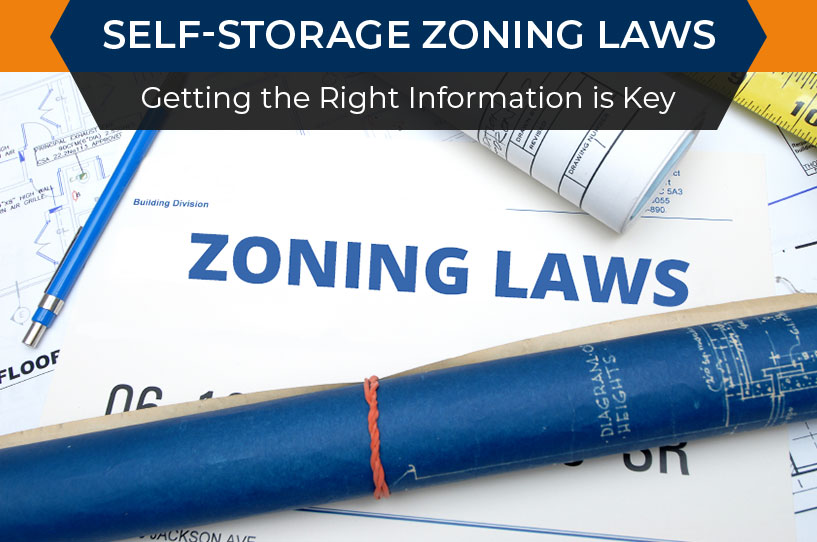For decades, self-storage facilities have had an image problem. One doesn’t have to think long to conjure up images of such dated, stuffy buildings with long, impersonal lines of cold, metal buildings. But in recent years, they’ve grown in popularity, with one in ten American families stating they used an off-site facility.
What’s more, they’ve started to gentrify, with new amenities and locations that offer a more aesthetically pleasing architecture. But how did they get there? Part of the reason self-storage facilities were typically so removed from desirable locations is that they were zoned to operate only in industrial zones.
The zoning process for self-storage buildings has changed with their growing popularity, but it’s vital to know the laws before building your self-storage facility.
Zoning for Your Self-Storage Building
Zoning laws are there for a reason; they make sure the land is used to benefit the community. Zoning laws regulate land into categories, such as residential, commercial, industrial, agricultural, and recreational.
The issue is that self-storage can’t be easily fit into any of these categories. This means you’ll need to ask for a conditional permit or rezoning of the area. Typically, you’ll need:
Permitted Usage
Also known as land use by right, permitted use of a parcel of land saves you the trouble of going through public hearings or dealing with local politics. If you comply with the set standards, there should be no problem. Setbacks, landscape requirements, and building coverage limitations are just some of the things you’ll need to obey to be in compliance.
Conditional Usage
A conditional use permit requires hearings, presentations, and politics, which can all be a hassle. After you present your project, the government will set the circumstances on your project for impact mitigation.
Design Reviews
If jurisdictional agencies want some control over your self-storage facility’s design, then they may call for a design review. This usually occurs when there is interest in your building’s architectural compatibility with others in the neighborhood.
Rezoning Requests: What Are They?
Depending on where you live or where you want to build, Permitted or Conditional use permits may not be allowed. This is when a rezoning request is necessary. A change in zoning category for a building that doesn’t neatly fit in any of them is not a simple process.
Rezoning requests rest entirely on a public hearing and government approval, but there are things you can say during your hearing to make your case stronger. Things like,
- Self-storage facilities attract little traffic or crime. With few employees and good security, your building won’t be a magnet for criminal activity.
- Self-storage facilities are often closed at night with minimal access. There is little noise during operating hours and virtually none at night. Further, elaborate on your building’s security and the enhancements your storage building will afford the neighborhood.
Getting Your Self-Storage Building Approved
We’ve already discussed some positive attributes you can call attention to that will make your mini storage building more attractive, but that’s just a helpful tip. Gaining approval for your project will not rest entirely on a good argument; you need a well-developed site plan with basic architectural rendering.
It always helps to come prepared, and doing your homework goes a long way. If you don’t have experience with zoning laws or city politics, hiring a zoning attorney may help appeal to local special interest groups such as homeowner’s associations, the planning commission, or even an official’s personal goals.
Put a crack team together, including professionals such as:
- An architect
- A traffic engineer
- A landscape designer
- A civil engineer
- An attorney
You’ve probably heard the term “NIMBY” over the years – “Not In My Back Yard.” People care about what is developed in their neighborhood, be it a Walmart, a prison, or a self-storage building. Launching your community outreach campaign could offset any adverse reaction to your project.
A wise course of action would be to engage with the local community even before buying the land and making your intentions known. Being as transparent with the local population could also mean a built-in customer base after they warm to the idea of having one nearby.
Self-Storage: Zoned for You
Self-storage buildings are making significant headway in recent years by upgrading their image. One only needs to look at the complex zoning process to see a different set of rules in play, and mastering them before you have to make your case to a committee will help better secure your project’s approval.
With more than 20 years in the business, Storage Building Central is ready to help walk you through the ins and out of storage building installation. We are one of the leading providers of storage buildings in the industry, offering quality products with exceptional customer service at competitive prices. We offer rapid delivery, and you can even buy online. So hurry up and call us today at +1 (844) 315-3151.


